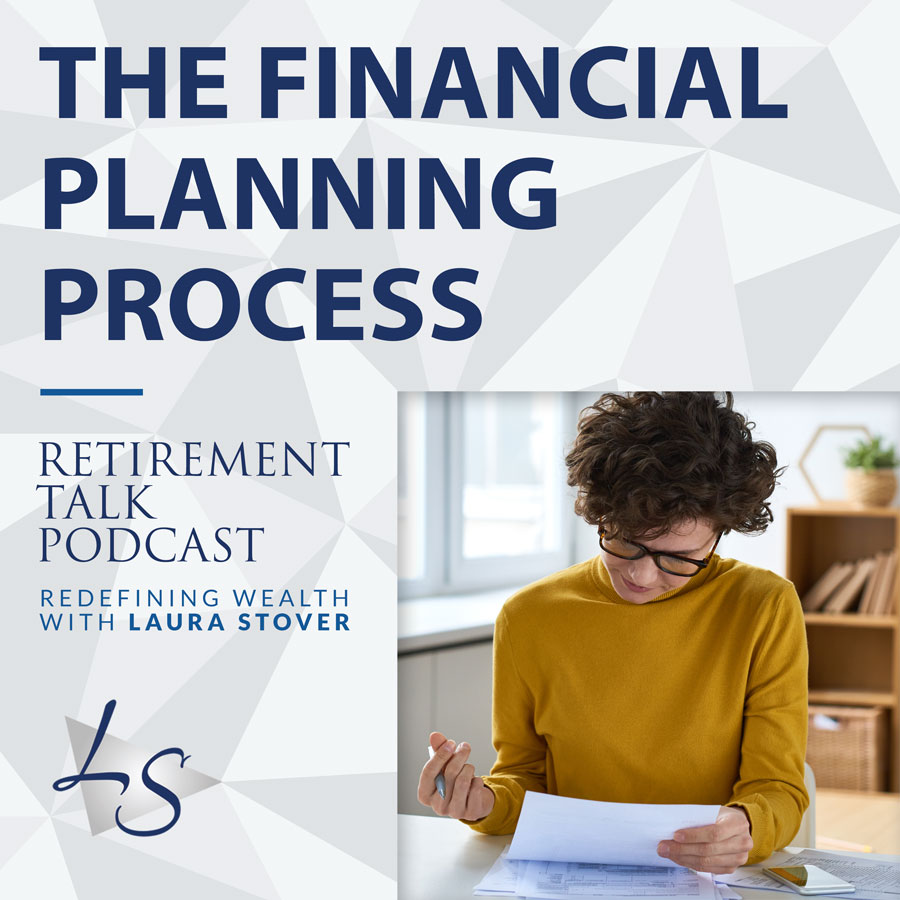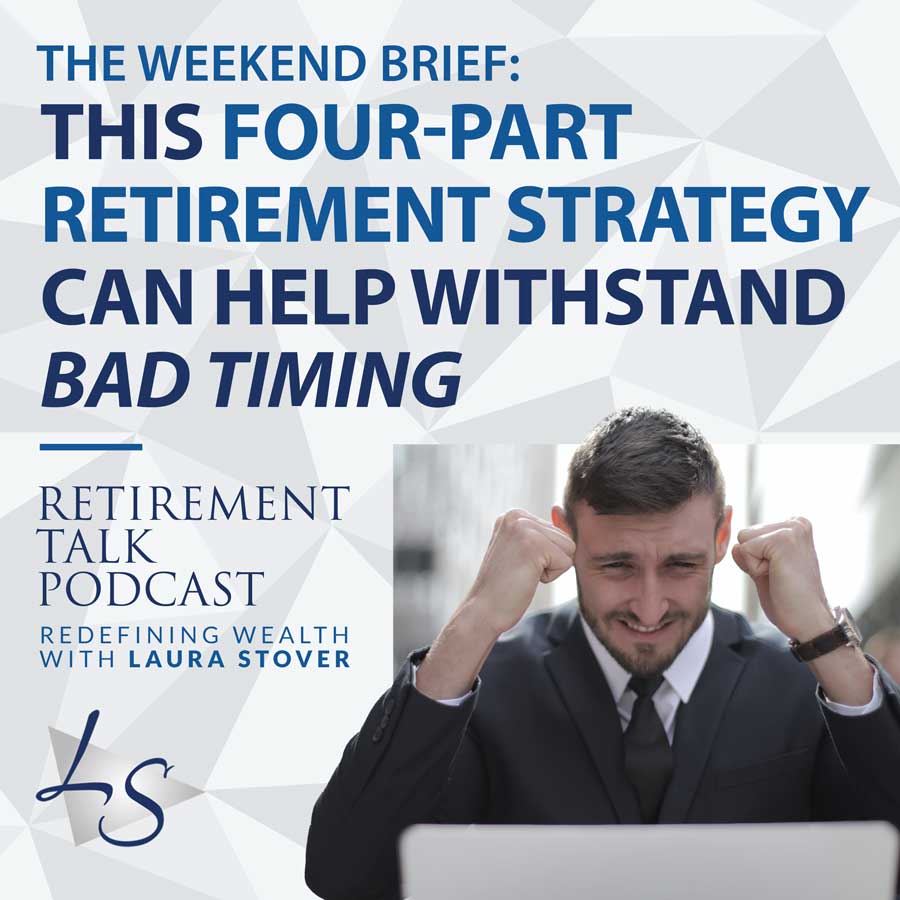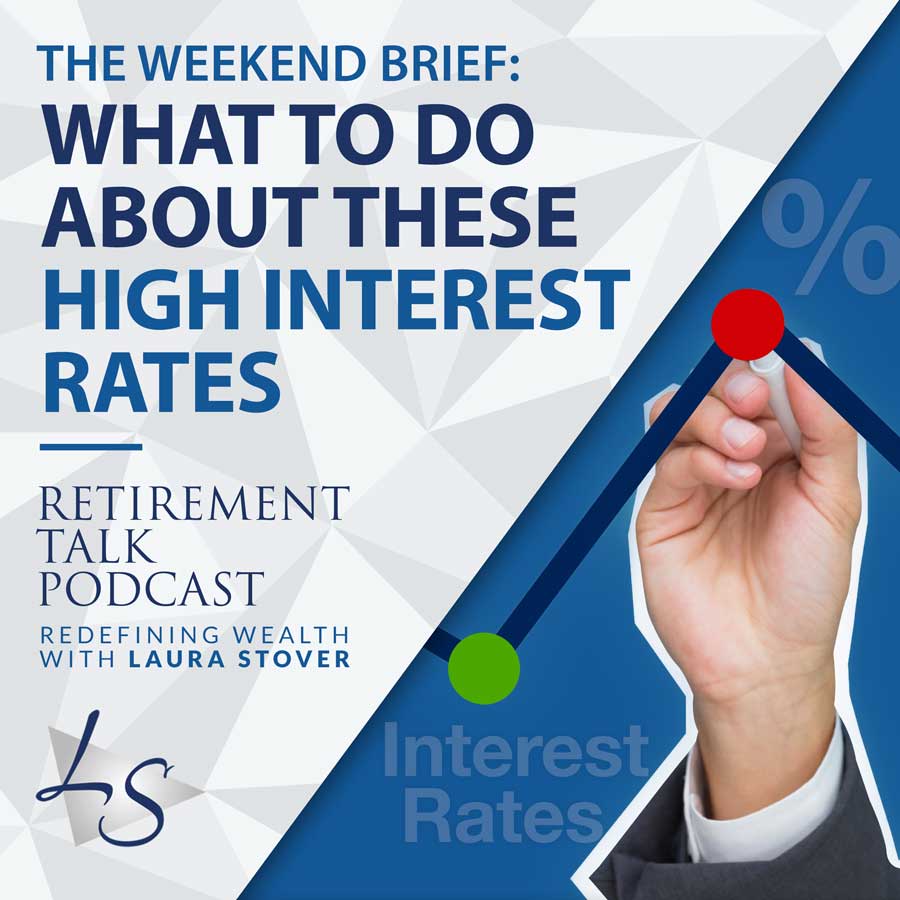We discuss many different money management tools on our show but having a defined process is perhaps the most important thing investors need to consider when constructing their plan. Having a process allows you and your assets to perform at peak capacity. Customized to each individual a process should cover your income needs, investments, tax planning, estate planning, and liquidity.
While many of us may be tempted to chase the market, we want to ensure we have a consistent rate of return, especially as we inch closer to retirement. Your plan needs to cover both inflationary and non-inflationary expenses when constructing a cash flow analysis. Once you know how much cash you need in retirement you can position your assets to achieve those goals.
A financial framework like the one we follow in the Redefining Wealth Process is a financial baseline that gives many clients the confidence they need in both the accumulation and decumulation phase of financial planning. On today’s episode, we’ll explore the importance of developing a customized process in your financial plan and how it will help you achieve a stable retirement future.
Check out Episode 92 mentioned in today’s show: https://redefiningwealth.info/92-volatility-the-retirement-killer/
Get a free copy of our “How to Survive a Bear Market Guide”: [email protected]
Strategy consultation and analysis: https://redefiningwealth.info/schedule/
Review the article mentioned in today’s show >>
Rate & Review and Subscribe to the Podcast:
https://podcasts.apple.com/us/podcast/retirement-talk-podcast-with-laura-stover/id571347188
Links
Schedule a Review: https://redefiningwealth.info/schedule/
Timestamps (show notes):
1:10 – The power of process
4:01 – Your team and your income plan
7:12 – Having a goal for your assets
9:22 – Risk number and your current allocation
15:18 – Decumulation phase and connecting with goals
21:28 – Going through the process prior to recommendations
26:42 – Starting to diversify early
Listen & Subscribe
Review the Transcript:
Ron Stutts:
Welcome to Retirement Talk, the Redefining Wealth trip. Your source for financial information, specifically for pre-retirees and retirees. We’re here each and every week to help you better navigate during these economic times. We’re here to discuss thoughts and ideas in the field of finance and retirement, as well as discuss trending topics that can impact your bottom line. We will break it all down. These discussions can help you make better informed decisions, so you can make better financial choices and live the lifestyle you imagine for retirement.
Laura Stover is a registered financial consultant and CEO of LS Wealth Management, as well as founder and owner of LS Tax, a consulting firm. She’s been featured in Forbes, CNBC and the Wall Street Journal.
I’m Ron Stutts. Our topic for today is the power of process in financial planning from force. Now here are your host, Laura Stover, along with certified financial planner, Michael Wallen.
Laura Stover:
Hello. Hello. Hello, Michael, the certified financial planner, Wallen. How are you, my friend?
Michael Wallen:
I am doing wonderful. Glad to be with you today, Laura.
Laura Stover:
And it’s always a joy each and every week. We want to cover a really fantastic and impactful topic for this week’s show, the power of process and financial planning. This one here folks is we talk about a lot of tools, a lot of detail to money management, to taxes, planning on many of the shows we’ve done. But I think this really is the core, most important element. It’s not about product peddling. It’s not about having hodgepodge syndrome, which I coined that many years ago, where clients have a little bit here, there, and everywhere, but you need to have a defined process, and we want to break down what does that exactly look like? What does it mean?
And I think this article is spot on in terms of why it’s important. And I am a firm believer that process helps allow you, the client, and your assets to perform at peak capacity. And that is why I developed the redefining wealth planning process some time ago. That is indeed the framework after I’ve seen and reviewed so many different client accounts over the years. So many that just had no rhyme or reason. Maybe they’re stock-driven, maybe they’re product or annuity-driven, maybe they’re cash-driven, maybe they’re real estate-driven.
See everyone gets hung up on their favorite donut. If you want to refer to products or financial products like a colorful box of donuts because depending on the type of advisor you talk to, that’s probably the propensity for which most clients are ultimately going to lean. And I think the power of what we really want to talk about, it’s a real game changer for the families that we work with for individuals and families.
Now keep in mind, process doesn’t deliver a perfect retirement plan, but it has the capability to create a really, really good plan because it’s customized to each individual, just like your fingerprint is unique. And you have to understand what that plan should look like. We kind of equate it to the three-legged stool of retirement planning, but it all centers around a process that covers income, investments, healthcare, tax planning, estate planning and liquidity. I broke it out into six parts.
Now from that, let’s break down the income component. And the team behind the process, I think every team should have their certified financial planners and gifted people that contribute to the overall plan, the concept and breaking that down for every individual situation. So when we talk about the process, it really starts with income. Won’t you agree, Michael? And the cash flow, the budget, the expenses, the savings?
Michael Wallen:
Absolutely. Well, I take that back. I’d go one step before that, and that is the individual having a focus commitment because as you know, when we sit down with clients oftentimes, they want a goal. They want all of the information to be put together. They want to have the assessment, but it’s really that commitment. And we know that our clients that get the most out of the planning that we do are the ones that fully engage. And we are all busy in life. We get distracted, we had a hundred things going, a hundred plates spinning in the air. And really what you’ve got to do is make that commitment to say, “I want a true financial plan. I want a roadmap that I can run off of.” And then we start with the cash flow. And that really comes in into what are we solving for? What do your expenses look like today?
And now, one of the things that we do in redefining wealth that is much different than what our peers do, we do not just apply a cursory inflationary rate to a number and say, “This is what your future expenses are going to be.” I think all the listeners that are dialing in today would agree that all expenses they have are not inflation-adjusted. Think about your mortgage, think about your car insurance. Those are expenses you have that are not inflation-adjusted. And then you have the other group of expenses that may include your utilities. It may include your groceries. We’ve all seen that go up. It could be our expenses as it deals with maybe some of the expenses around our home where we’re hiring services to come in, but you really have to sit down with that budget and really separate into two camps, your inflationary expenses and your non-inflationary expenses to truly get a future expense level for cashflow analysis in your retirement years.
Laura Stover:
Yes. And I think that’s one of the things we do very, very well with the proprietary digital platform, that you’re pretty much the impetus behind from a certified financial planner’s perspective on how that should look with the developers that have very well laid that out with our LifeArcPlanning system. So the budget, the expenses, then there’s the assets, which is an inventory of everyone’s holdings, bank accounts, bank assets, investments, real estate, all of the above, future, if you have a pension, social security income, that sort of thing. And that includes the asset allocation of the risk profile in the estate protection planning. Let’s elaborate a little more on this aspect of the three-legged stool.
So cash flow, now we’re on assets.
Michael Wallen:
Yeah. With assets, until you know your cash flow, you really have no goal for your assets if you’re investing them. And then, you look at where are you going to invest them? So, if we look at LifeArcPlan, which is our proprietary software system that does analysis for us, what we want to do is determine the cash flow. And then back in, as Steven Covey said many years ago, he coined the quote, “begin with the end in mind.” So if you know what you’re solving for now, you can back into current time period and say, “This is how much time I have available, and this is the present value of my assets. And if I apply a rate of return to my present assets over the number of years, this is how much I’m going to have at my retirement time to meet my cashflow needs.”
So you have to begin with the end in mind. And unfortunately, and Laura, we see this all the time. People come in and they’re chasing the market. And the first thing they tell us is, “Oh, I made a 5% return, I made a 10%, I made a 15% return on my portfolio last year.” And you and I often ask them, “Well, was that enough? Or was that too much?” And they always look because everybody would always like to make more. But the reality is why are you exposing your money to unnecessary amounts of risk? If you happen to be in a very good financial position, and you only need a 3% return on your money, why are you exposed to a portfolio that gives you 15%? Because we know that the higher returns come with a higher exposure to risk. And if you only need 3% to make your retirement lives the joyful side of everything you want, why are you exposing yourself to unnecessary amounts of risk?
Laura Stover:
So let’s elaborate on that thought that you brought up. And this is very misunderstood and overlooked, I think very often when we are, are talking with other people, and they’re looking for an analysis of this nature. Maybe they love their return the last two years. Most companies, most advisors look like rockstar the last two years, no matter where you were. I mean, because the market who has all this money going in from the Fed spending and spending and spending and the pandemic spending and an excuse to spend on every avenue, there is so that very much propped… It did contribute to a lot of the market returns. But with that stated, when you do the analysis properly through the system that we utilize, one of the things it’s looking at is what’s your risk number, and then how is that matching up with where your current allocation really stands?
And very often, even if they say they’re conservative or moderate or even moderate aggressive, a lot of times there’s more risk in the portfolio than what their stated risk is when they go through the questions in the way that their input within our system. So, why there’s the potential when the market is up, like you stated to earn a lot more, it’s about consistency of return. We went through this a few shows back. I think it was episode 92 that I’ve put you on the spot. And we did the math analysis through the show. You can have two portfolios with the exact same return. And the one that has the lower volatility has more dollars in it at the end of the day. So this is why it is so imperative because now, this year, market was great last year. The phone doesn’t ring at all. No one’s concerned.
Now, this year what’s going on. We’re seeing a pullback. We have a lot of volatility. Well, a lot of our algorithms triggered February 23rd at various points in time, we took a risk off for some of our clients, and we’re going to use a blended approach. So some asssets remain invested. Others are preserving those dollars because these clients are nearing retirement or in retirement, and they cannot lose all of that capital. So it’s about the consistency of the return. And I think that’s one of the most crucial aspects to really know your number for a successful retirement.
Michael Wallen:
If we were in a game of archery, we would have to have a target in front of us. If not, we’re just shooting the arrow into the dark. And that is one of the situations. Often times, people are going from left to right. They meet with a person and that individual is kind of an own ramp for them to get up onto the investment highway, and they get them into the freeway and the flow of traffic, but with no destination of what are they really trying to achieve? Where do you know who your off ramp is? Where do you know when you’ve actually got to your destination? What does your GPS tell you about your investing? And this kind of goes back, Laura. I heard a phrase at one of the training events that we were at. They had done a study, and that most individuals spend more time planning a vacation than they have ever spent in planning their retirement and retirement could be 30 years.
Laura Stover:
I haven’t planned their vacation at all. I need a vacation. I really, but I love a vacation. My GPS isn’t taking me that direction at the moment.
Michael Wallen:
Well, and that’s why people need to sit with people that are fiduciaries because there are three components of a fiduciary duty that is going to help that individual map out what they need. And a fiduciary duty is made up of these three components, duty of loyalty, that individual is there working on behalf of that client to do what is in the best interest for that client. Then we have what’s called the duty of care. And that means that we’re going to do what is prudent and ethical. And well, there’s 19 components of the prudent man act that we follow. The last part is duty to follow client instructions. And that means that you can’t have instructions if you don’t have a written plan that is to be executed. So, there’s a process here that an individual should actually go through and really spend that focus-committed time to building out a sustainable plan that has the highest probability of helping them meet their overall objectives.
Laura Stover:
So the GPS or the guided planning system is what we’ve really embraced around the redefining wealth process. Having a framework in place, so that you map out your money with confidence and above all, the plan should be a financial baseline for your financial journey. And then thirdly, connecting about goals. And we’ll go into this a little more after the real quick break here, but this has to include your short-term, long-term and easily attainable goals, and then what we kind of refer to as stretch goals. This is great. Don’t go anywhere. You’re listening to Retirement Talk with Laura Stover and Michael Wallen.
Ron Stutts:
You are listening to the Retirement Talk podcast with your host, Laura Stover. Get a copy of our How to Survive a Bear Market guide, email [email protected]. Request your free copy. Now, back to the show.
Laura Stover:
So putting together life plans, business plans, health plans, reaching goals, we are now into March of 2022. A lot of people made New Year’s resolutions. How many do you think have fallen off the wagon already from January 1 to the present?
Michael Wallen:
The health clubs are starting to have empty parking lots already.
Laura Stover:
Well, I can appreciate how difficult that is, but this is the difference between success and failure in my view in retirement. You may have done a great job your entire life working so hard, getting up by that alarm clock every morning. That’s painful sometimes, but the alarm clock is not necessarily your best friend, and you’ve saved your nest egg. Well now, it’s just as important to focus on the de-accumulation phase and all of the facets that go with that. So, I’ve been training for an example and living pretty much, and I’m not quite as strict, but I stick with the concept of, because I believe like anything, moderation and goals that can become habits.
James Clear has a great book called Atomic Habits, by the way. And a habit is something that you can repeat over and over. If you do that so many times, then it automatically becomes natural, and it can become part of your daily routine. Successful people don’t happen by accident. Successful people have a common denominator, and I believe retiree should be successful. And it is knowing your priorities and accomplishing this through systematic goals and structuring those goals on a consistent and daily basis, daily and consistency.
So, training in the gym despite of your age, having a lifestyle that helps you with your health goals. We know when it comes to discipline, this is a process and a frame of mind, and that consistency through this process is essential for success. And that is the same focus people really need to have with their money and their finances. It isn’t about the best bonus product, so that the person selling you that annuity, not that annuities are bad, but that they can make their quoted their goals for the year and make the trip. Why is it in your portfolio if it’s in there?
We get calls this year, Mike, a lot on, “Should I have gold?” Or, “I want to invest a certain way because I want biblically responsible or socially responsible invest.” Those things are all good, but let’s identify why you need this and walk through that process to make sure it’s covering the lifestyle with the income, the healthcare, the investment management, the tax planning, the liquidity that you need, and making sure that it’s estate-friendly and having all of these things coordinate together. That’s a formula that most advisors, unfortunately, really aren’t going through on a consistent basis. And that really, “I show up a half hour early no matter how tired I am before I start with the trainer.” You have to show up, you have to dig in and take risk responsibility for understanding your money.
Michael Wallen:
You do. And I think that’s a great point, Laura. And unfortunately, that’s where most people take their finances as a very cursory event on the front end. Many times, it’s during the years when there’s still cash flow, maybe from the working years. And we kind of get into this lull of believing that if we can just go to work, we’re going to have enough cash flow. We are way ahead of what our expenses are, but it becomes a rude awakening in the early part of the retirement years, when an individual starts becoming dependent upon the assets that they’ve set aside, and they’ve miscalculated, or they’ve not considered the impact of inflation. And I think all of us are feeling that today.
I had a call from a client, came in yesterday and they said, we have woefully miscalculated what our expenses are going to be at in retirement. And then coupled that with what inflation is going to be. And again, I told them, I said, “Now, that’s why we need to come back and actually go through the full comprehensive process.” And oftentimes, that’s not being done.
I would say to all of our viewers today, if you’re working with a financial advisor, and they spent a total of one or two visits with you, maybe two hours of gathering information from you, before they gave you their recommendation, you have not got a plan. You have enough information that they’ve gathered from you that they created some recommendations, but there’s no way that an advisor is going to truly know you, understand all of your goals. It takes a period of time and that information needs to be gathered before recommendations start being made.
Mostly, if you’re going to use financial instruments that have penalties for changing your mind or leaving. So, a lot of times when you look at insurance-based products that may have surrender schedules, you really need to understand how those components are going to fit to the overall objectives in the short-term, midterm and long-term, as you mentioned a moment ago, Laura. Because if you need to pivot, if you need to adjust, if inflation goes up, if things happen, and it’s so locked down that there is no flexibility, they will find themselves in a shortfall on cashflow. And then that impacts all other aspects of their life.
Laura Stover:
There’s investment planning, and then there’s everything else when it comes to financial planning. And according to most financial planners, the CFP, with your CFP, we have several on their team and that’s important, I think as well. That’s not an exclusive criteria, but certainly, one that I think holds a lot of merit. And quite frankly, it’s just as important, or in some cases, more important than the rate of return on investments.
More important than the rate of return is the process because rate of return is temporary. Process is a little more permanent. And to your point, if the advisor you’re sitting down with is leading with, “Oh, this has a 35% bonus.” And we’re not picking on annuities, or the stock. And you can have that talk dependent upon the type of advisor you’re working with. I believe so much, as do you, the proper balance, and you have to go through the budget and the analysis of everything to your point before you ever make a recommendation. I don’t think as a whole, that’s happening with a lot of clients that come to us. They think they’ve been through a process. They have Monte Carlo simulations and eMoney reports, or projected rate of returns that you’ll see from some brokerage firms. That kills me how you can put an estimated return on a statement and you know in the client’s mind, they perceive that to be their rate of return.
Michael Wallen:
Sure. There’s so much information that comes out and individuals that do not have a plan, they really don’t… And when I say a plan, a written plan is we create. If they don’t have a written plan, when things become out of what we would call the norm or the expected, how do you go back and correct it?
You have to measure what matters. And oftentimes, this was the Kinder Brothers. When I first came into the business nearly 30 years ago, Jack and Garry Kinder had created a guide to help financial advisors. And it said, “Measure what matters.” And so, if you’re trying to measure and you’re going to need to make adjustments, if it is not a written plan, how do you know how to go back and actually tweak? And where do you tweak? Or what do you adjust? And oftentimes, it becomes the worst scenario, a client will abandon the process totally. They will jump ship and maybe go to another advisor that will do the exact same thing. So they think they’re improving this process, or they think they’re improving on what was created for them, but if you’re only going from a salesperson to a salesperson, you really have not changed anything, but the name that’s at the top of your statement that you get each month.
Laura Stover:
That’s right. So, it’s very critical as we were speaking earlier about the cashflow analysis. And that gauge is exactly where you are for reaching financial independence. And obviously, the older you get, the more accurate cashflow really has to become. And it’s really the variable of time. It becomes less of a constraint, but if you’re young, such an analysis still can provide a very, very valuable litmus test, so that you can see at least that you’re heading in the right direction. And even though plenty may change in your life, be 30 or 40 or 20 years down the road, the biggest issue we run across as financial planners is when we get involved too late. If the client meets with us for the first time, let’s say at age 60 and has only a few hundred thousand dollars, there’s no way to sugarcoat the fact that they may have trouble reaching the goal of financial independence.
I honestly have a case like this now. 61 and 60, he wants to retire yesterday, but probably at age 64. $163,000 in a 401k to rollover. They have their social security. Finally, we have the expenses correct in the LifeArc system because they were extremely off when we initially started, but there’s still a short fall. Even with the planning that we’re putting in place, they have a shortfall. So the bottom line, he needs to work longer. And sometimes that’s what we have to tell whether people want to hear that or not. We have to tell them the truth.
Michael Wallen:
Most of the time, for those that have to work longer is because they didn’t start early enough. I hope that the listeners that are dialing into the show, I would love that they were all 20 years old and today, they would put $5 aside.
Laura Stover:
Like me.
Michael Wallen:
Yes, yes.
Laura Stover:
I’m 20.
Michael Wallen:
Absolutely. I’m all of 20. But I would love to see a 20-year old, just start putting $5 aside. And if they understood the compounding ability, the future value of that $5 contribution… I was so proud Laura, and for all the listeners on here, my daughter, I’m not going to say her name, but she is a minor. She receives money at Christmas and birthdays and things of that. But she heard me talking to a client the other day on some of the diversifying. And when I got off of the call with them, she said, “Dad, could I take $400 of my money and buy silver?” And I was like, “Yes, you can. Absolutely, you can.”
So, she has recently made her first purchase into silver coins and that will be a part of a diversified portfolio for her later on, as she gets into her working years, and she starts contributing into other retirement accounts, but she already saw the value. I showed her some numbers on a spreadsheet that it’s just starting early, how much better off she will be than I am because I started so much later than she is.
But the fact of starting early and putting the money to work. Money makes money 24 hours a day, or has the opportunity to be positive in your growth 24 hours a day. When we work, we’re limited to eight to 10 hours. Our body gives out, but that money will keep working for us over and over and over. And the goal is to get it started early, get it started often and let it grow.
Laura Stover:
And that is exciting to see happen. And yes, I wish I could go back. As I remember my parents, I wish I could go back and know what I know now. And certainly, she’s going to benefit from hearing those things on a consistent basis.
But most people are not taught about money until much later in life, the majority of people. And some have a broad comprehension and possess some talent for certain aspects of their financial planning, but they’re still disconnecting on the risk that they’re taking in the portfolio. And the fact that when you put this all into the system and the software that we utilize is extremely important. It’s more than just an Excel spreadsheet that some advisors may use to create a budget, showing and reflecting cash flow. It has to dig down on a more granular level. And that is what the LifeArcPlanning system does.
And it really is going to look on a recommended cash flow. It may mean the cost client would have to save additional money, spend less purchase insurance, change their estate planning. The client may want to see certain cash flow scenarios, and it could be due to the fact the client wants to retire sooner, like most people, rather than later, or purchase a home and how that’s going to affect whatever they’re aspiring to accomplish. If you would like a complementary LifeArc analysis and access to this tool, we’ve been speaking about today and see a little more under the hood, feel free to go to redefiningwealth.info, click review, schedule a 15 minute strategy session with Michael and myself. Again, that’s redefiningwealth.info.
Ron Stutts:
You’ve been listening to the Retirement Talk podcast with Laura Stover. For a copy of How to Survive of Bear Market guide, email us at info@lswealth management.com. Request your free copy now. That’s info@LSwealth management.com for our guide on How to Survive of Bear Market.
Redefining wealth is a registered trademark of LS Wealth Management. Investing involves risk, including the potential loss of principal. Any references to protection, safety, or lifetime income generally refer to fixed insurance products, never securities or investments. Insurance guarantees are backed by the financial strength and claims-paying abilities of the issuing carrier.
This show is intended for informational purposes only. It is not intended used as the sole basis for financial decisions, nor should it be construed as advice designed to meet the particular needs of an individual situation.
LS Wealth Management, LLC is not permitted to offer and no statement made during this show shall constitute tax or legal advice. Our firm is not affiliated with or endorsed by the US government or any governmental agency. The information and opinions contained here and provided by third parties have been obtained from sources believed to be reliable, but accuracy and completeness cannot not be guaranteed by LS Wealth Management, LLC. Investment advisory services offered through optimize advisory services and SAC-registered investment advisor, LS wealth management is a separate entity.












